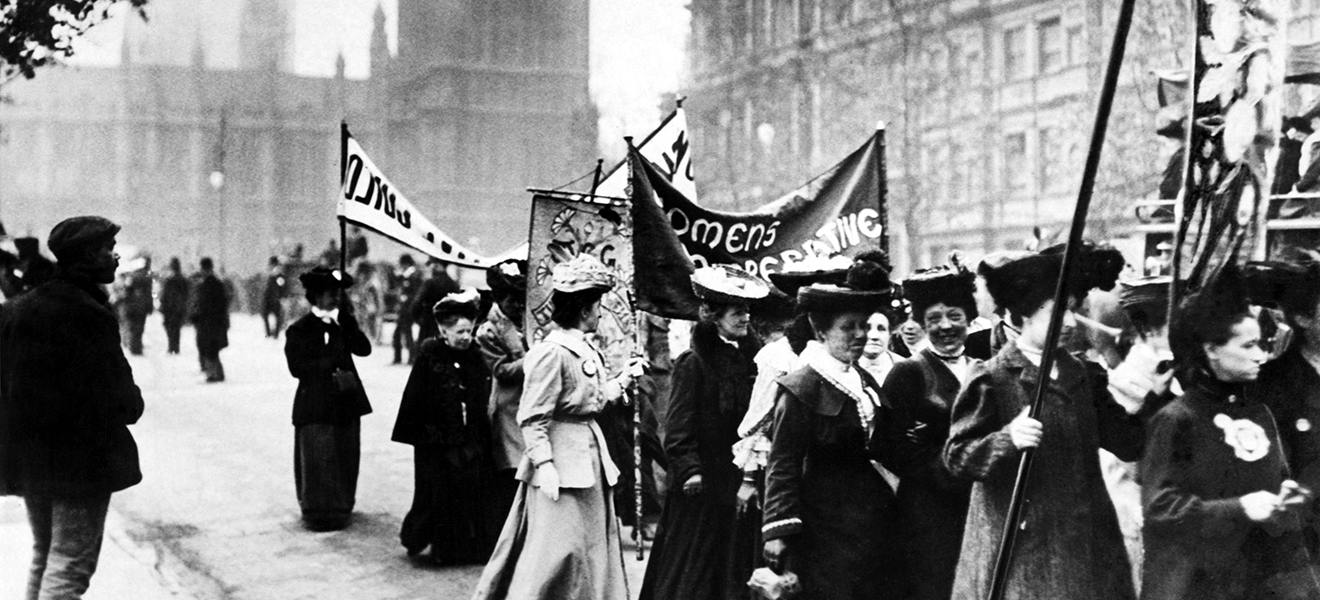Emmeline Pankhurst, a formidable figure in the annals of women’s rights, epitomizes the struggle for suffrage and gender equality during the tumultuous early 20th century. As a leader of the Suffragette movement in the United Kingdom, Pankhurst’s activism resonates deeply within the Bahá’í teachings, which advocate for the equality of men and women and the eradication of discriminatory practices. The congruence between her endeavors and the perspectives espoused by ‘Abdu’l-Bahá, a central figure in the Bahá’í Faith, presents a striking convergence of ideals that warrants intricate exploration.
At the outset, it is essential to examine the historical context surrounding Emmeline Pankhurst and the Suffragettes. The late 19th and early 20th centuries were characterized by pervasive patriarchal structures that dictated both societal norms and legislative frameworks. Women were relegated to subservient roles and denied basic rights, including the right to vote. In this milieu, Pankhurst emerged as a revolutionary beacon, galvanizing women to claim their entitlements through direct action, civil disobedience, and public protest. Her unwavering commitment to women’s suffrage ignited a broader discourse on gender equality and human rights.
‘Abdu’l-Bahá, the son of Bahá’u’lláh, the founder of the Bahá’í Faith, offered profound insights that align with Pankhurst’s mission. His teachings emphasize the fundamental principle of gender equality, positing that the advancement of civilization is intrinsically linked to the emancipation of women. He asserted, “The world of humanity is in need of its women, just as it is in need of its men.” This imperative resonates significantly in the context of Pankhurst’s advocacy, as both figures champion the idea that for society to flourish, the contributions and rights of women must be acknowledged and respected.
The Suffragette movement, while ardent in its pursuit of voting rights, also introduced a paradigm shift in society’s perception of women. Pankhurst’s methodologies, characterized by radicalism and a willingness to suffer for the cause, underline a pivotal transformation in the collective consciousness. Such actions, though sometimes controversial, highlighted the urgency of women’s rights, culminating in a juxtaposition to the Bahá’í teachings, which advocate for dialogue, education, and persuasion as tools for achieving societal change.
In examining the interplay between Pankhurst’s activism and the perspectives of ‘Abdu’l-Bahá, one must acknowledge their shared understanding of the obstacles faced by women. Both recognized that entrenched societal norms fostered an environment of hostility and oppression that needed dismantling. Pankhurst’s confrontational tactics and ‘Abdu’l-Bahá’s philosophical approach may appear antithetical; however, both sought to elevate women’s status and imbue them with agency.
One compelling aspect of Pankhurst’s strategy was her appeal to the emotional and moral dimensions of her audience. Through her speeches and writings, she articulated a vision wherein women’s capabilities were analogous to those of men. This deliberate framing served to challenge the prevailing notions of inferiority that permeated society. In a similar vein, ‘Abdu’l-Bahá’s teachings often invoked the ethical imperatives of equality, suggesting that neglecting women’s contributions to society represented a moral failing. His profound belief in the inherent dignity of all individuals reinforces the fundamental human rights perspective that suffragettes like Pankhurst passionately advocated.
The context of World War I further catalyzed the Suffragette movement, as women stepped into roles traditionally occupied by men. This shift showcased their resilience and capability, thereby eroding the longstanding stereotypes of female fragility. Pankhurst strategically harnessed this momentum, positioning women’s involvement in the war effort as a justification for their enfranchisement. ‘Abdu’l-Bahá concurrently advocated for unity and collaboration between genders during times of strife, underscoring the Bahá’í principle that progress requires the participation of all members of society.
As the struggle for women’s suffrage advanced, so too did the dialogues surrounding equality within the Bahá’í community. The teachings of ‘Abdu’l-Bahá engendered an environment where women could find solace and empowerment in their identities. The eschatological vision presented within Bahá’í literature emphasizes a future wherein gender inequities are abolished, showcasing a radical departure from historical practices. This aspirational outlook aligns exquisitely with Pankhurst’s vision of a world where women’s voices are not just heard but celebrated as integral to societal progress.
In synthesis, the intersection of Emmeline Pankhurst’s fervent activism and ‘Abdu’l-Bahá’s enlightened teachings illuminates a profound narrative within the quest for gender equality. Their combined legacies challenge contemporary readers to reflect on the multifaceted nature of activism, drawing inspiration from both confrontation and dialogue. The Suffragette movement, profoundly influential in its time, serves as a testament to the transformative power of dedication and perseverance. In tandem, the insights offered by the Bahá’í Faith present a timeless call for unity and respect among all of humanity, irrespective of gender.
Ultimately, the exploration of these parallels evokes a deeper fascination—how the indomitable spirit of one woman can echo through the teachings of a faith striving for universal human rights. As contemporary societies grapple with ongoing disparities, the teachings of ‘Abdu’l-Bahá and the legacy of Pankhurst remind us that the fight for equality is not merely a historical narrative but a living challenge awaiting our collective resolve.
